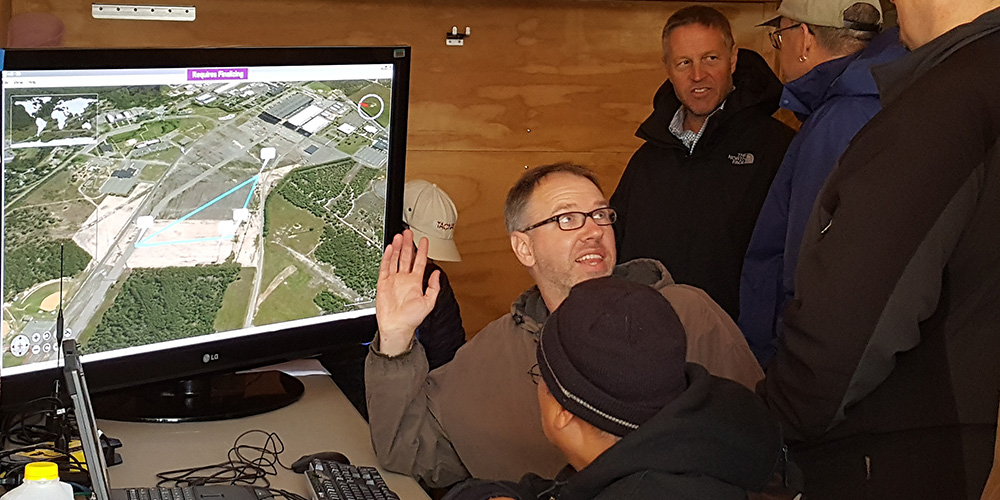
By Amy Walker, PEO C3T Public Affairs
JOINT BASE MCGUIRE-DIX-LAKEHURST, N.J. – The Army continues to make the tactical communications network more robust and expeditionary to support today’s complex missions. Recently it demonstrated an enhanced version of the line-of-sight Highband Networking Waveform (HNW), which provides a four-fold increase in throughput over the earlier version and could enable a future network aerial tier to significantly extend the range of operations on the battlefield.
“The current HNW 2.0 provides agile, high-bandwidth and long-range line-of-sight connectivity between mobile terrestrial nodes,” said Col. Joseph Ward Roberts, product manager for Warfighter Information Network – Tactical (WIN-T) Increment 3, which manages the waveform development and testing. “The enhanced HNW 3.0 waveform modified the timing to support longer range and greater throughput capacity specifically designed to support an airborne relay that could extend the network significantly under the right conditions and help reduce our reliance on expensive and limited SATCOM [satellite communication] resources.”

The Army leveraged these WIN-T ground communication nodes in support of the HNW 3.0 demonstration at JB MDL in May 2016. The increased throughput and range provided by the upgraded HNW 3.0 will improve the exchange of large files and data streams and the small packet performance for typical Voice over Internet Protocol communications. (U.S. Army photo by Amy Walker, PEO C3T Public Affairs)
HNW 3.0 uses a software-defined radio and a highly directional phased array antenna to locate its peers, and it automatically links itself to the network through the best communication path without configuring static line-of-sight links. It creates a self-forming, self-healing network where nodes can enter and exit without fixed network infrastructure or operator intervention.
The increased throughput and range provided by the upgraded HNW 3.0 will improve the exchange of large files and data streams, such as real-time high-definition video, and will greatly improve small packet performance for typical Voice over Internet Protocol communications.
WIN-T Increment 2, the Army’s mobile tactical communications network backbone, already uses HNW 2.0 for on-the-move, line-of-sight communications, but this earlier version of the waveform does not currently support an air tier.
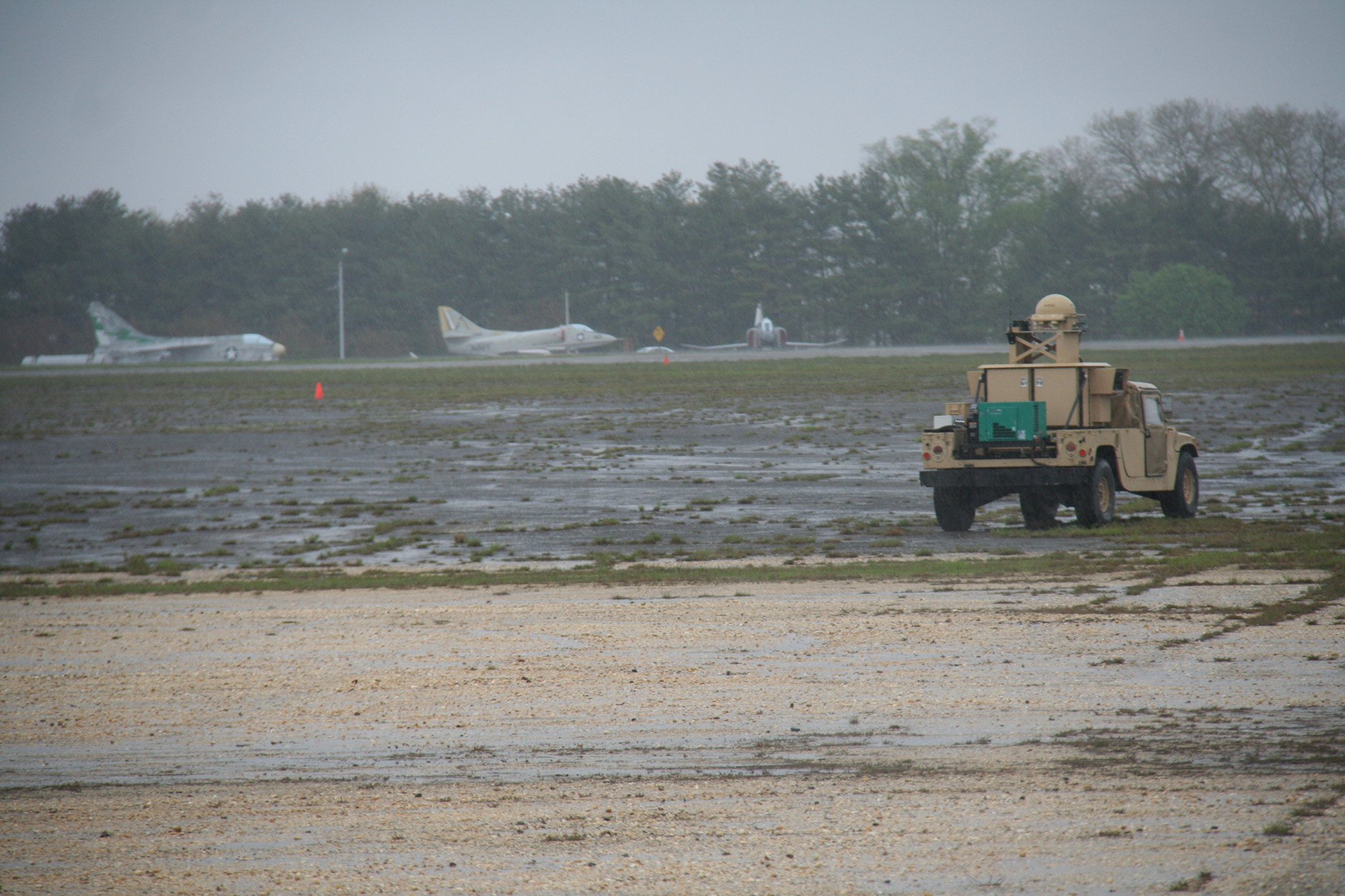
A Warfighter Information Network – Tactical (WIN-T) communication node supports the HNW 3.0 demonstration conducted at JB MDL. The waveform will be deposited into the Joint Tactical Network Center Developmental Waveform Information repository later this year. (U.S. Army photo by Amy Walker, PEO C3T Public Affairs)
“The increased throughput provided by HNW 3.0 is important, but the real importance is found in the ability to utilize the waveform with an air node to significantly extend operational range,” said Patrick DeGroodt, deputy product manager for WIN-T Increment 2. “You could stretch the operational envelope on the battlefield even in satellite- or electronic-warfare-contested environments.”
A two-week, multi-scenario demonstration of HNW 3.0 was conducted at Joint Base McGuire-Dix-Lakehurst (JB MDL), New Jersey, in May, and a follow-on capstone demonstration of the waveform with the aerial tier is scheduled for Fort Huachuca, Arizona, in late June. Following a successful demonstration at Fort Huachuca, the Army will place the HNW 3.0 waveform into the DOD Waveform Information Repository, managed by the Joint Tactical Networking Center, for future use by industry, Army and other DOD programs.
Improving Operational Flexibility
In 2014, because of tight budget constraints, the Army restructured the WIN-T Increment 3 program and de-scoped the portion of the program that supported the future air tier. However, based on prior investment, the opportunity for capability reuse by joint services and the relatively low cost to finish development and testing, the Army opted to complete HNW 3.0 for future use.
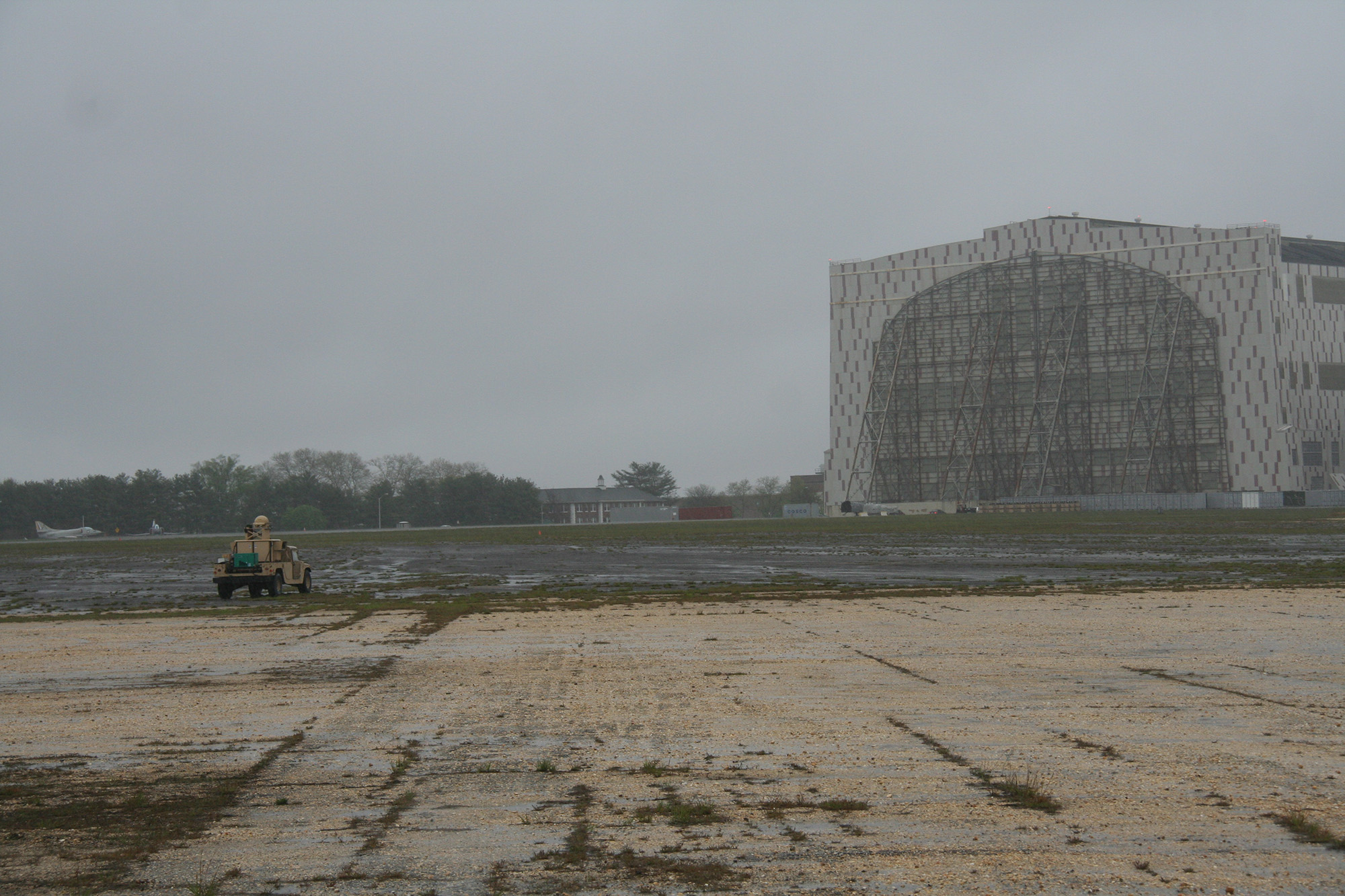
JB MDL, which hosted the two-week HNW 3.0 demonstration in May 2016, is home to this hangar that once housed the Hindenburg. A follow-on demonstration is scheduled for Fort Huachuca, Arizona, in late June. (U.S. Army photo by Amy Walker, PEO C3T Public Affairs)
The current WIN-T Increment 2 Highband Networking Radio cannot host HNW 3.0; however, looking forward, the Army is investigating the possibility of new software-defined radios for both the at-the-halt WIN-T Increment 1 and on-the-move WIN-T Increment 2 that could host both HNW 2.0 and 3.0 and provide interoperability via a network layer bridge, said Lt. Col. Mark Henderson, product manager for WIN-T Increment 1.“This would further unify the network as we increase capability, range and throughput, and it would further enable the Army to fight both increments of the network as a single force,” he noted.
Additionally, according to Roberts, if the Army eventually decided to move forward with an air tier, it would add a third signal pathway option to the traditional line-of-sight and satellite network, providing a three-tiered architecture: ground, air and space.
“The addition of that extra layer would make the network more robust and provide maximum operational flexibility,” Roberts said.
The demonstration at JB MDL included radio communications between 10 mobile nodes integrated on High Mobility Multipurpose Wheeled Vehicles (ground-to-ground communications), and between an air node integrated on an RC-12 aircraft and the ground nodes (point-to-multipoint communications). In a real battlefield environment, one aerial node using HNW 3.0 is designed to support up to 200 ground nodes.
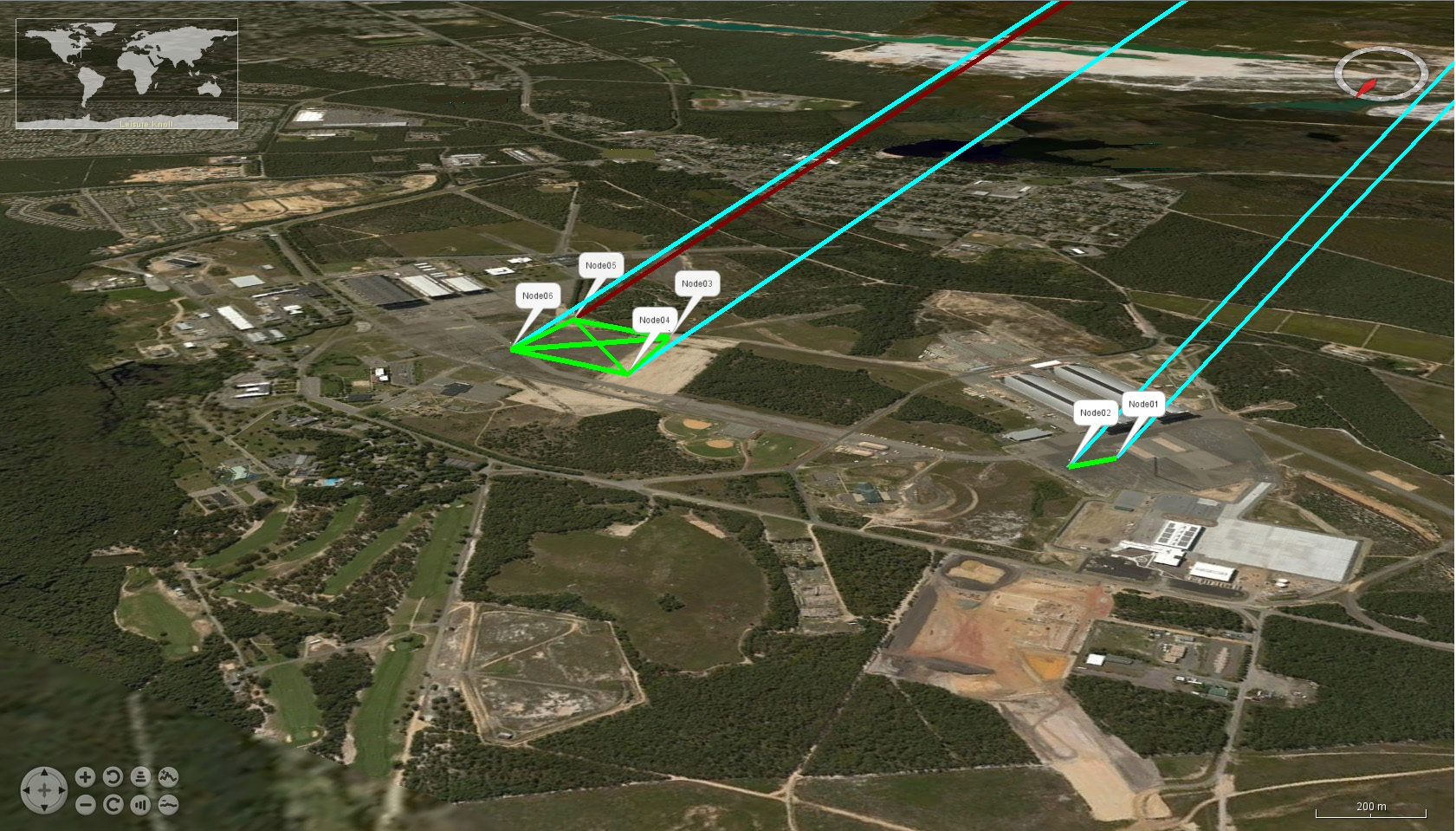
The HNW 3.0 air-tier “heals” two fragmented ground unit clusters during the two-week, multi-scenario HNW 3.0 demonstration conducted at Joint Base McGuire-Dix-Lakehurst (JB MDL) in New Jersey in May. The demonstration included radio communications between 10 mobile nodes integrated on High Mobility Multipurpose Wheeled Vehicles, and between an air node on an RC-12 aircraft and the ground nodes. In a real battlefield environment, one aerial node using HNW 3.0 can support up to 200 ground nodes. (U.S. Army photo)
“The air node provides all the benefit of a dedicated satellite transponder but without the cost; all the ground nodes see it and it sees all of them, and it relays the information back and forth as optimally as possible,” said Alex Roland, HNW project lead for PM WIN-T Increment 3.
One of the main benefits of an HNW 3.0 air tier is the reduction in the Army’s reliance on SATCOM, Roland said. Commercial and military satellite time is limited and in increasingly high demand, requiring the Army to prioritize its access, but the addition of a dedicated air tier would offload network traffic from overburdened satellites and could afford commanders with reliable, beyond line-of-sight options and greater operational autonomy.
“Continual investment in advanced technologies such as HNW 3.0 will help extend the network within expeditionary brigade combat teams for a more agile force,” said Doug Burbey, deputy product manager for WIN-T Increment 3. “And it will provide a more robust network with increased capacity to keep Soldiers connected and to improve information flow, enhancing a commander’s decision-making processes—even in SATCOM-denied environments.”
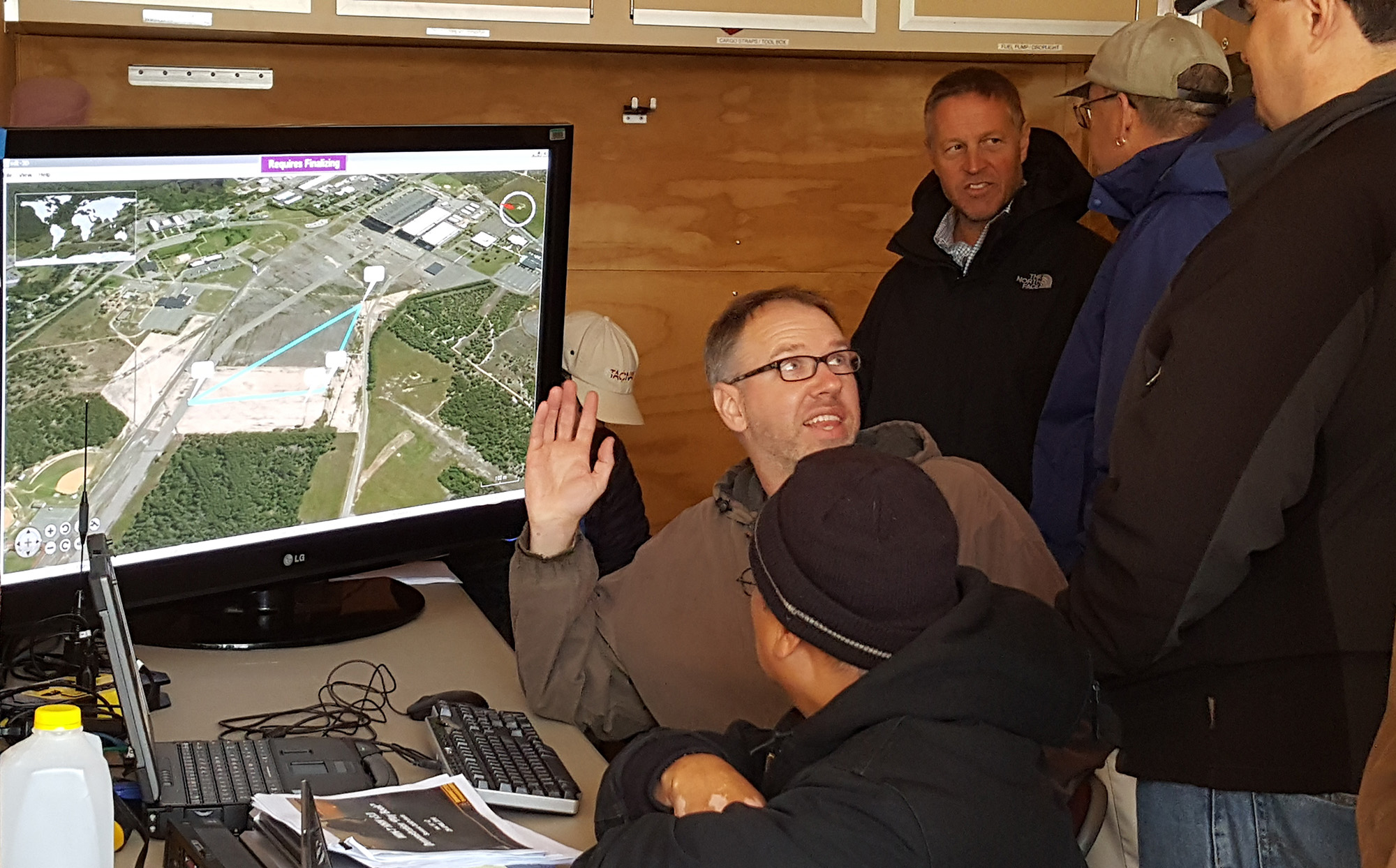
Army engineers monitor network communication links during the HNW 3.0 demonstration in May. Adding a dedicated air tier would offload network traffic from overburdened satellites and could provide commanders with reliable beyond-line-of-sight options and greater operational autonomy. (U.S. Army photo by Amy Walker, PEO C3T Public Affairs)







